Trees provide benefits like shade, privacy, and fruit while also adding beauty to their surroundings. However, it’s important to know when a tree in your yard is showing signs of decay or needs to be cut down. Falling trees can cause injuries and expensive damage to homes or vehicles, especially during bad weather. Keep reading to discover the eight signs that a tree is dead and when it’s time to cut it down.
1. Exposed or Heaving Roots
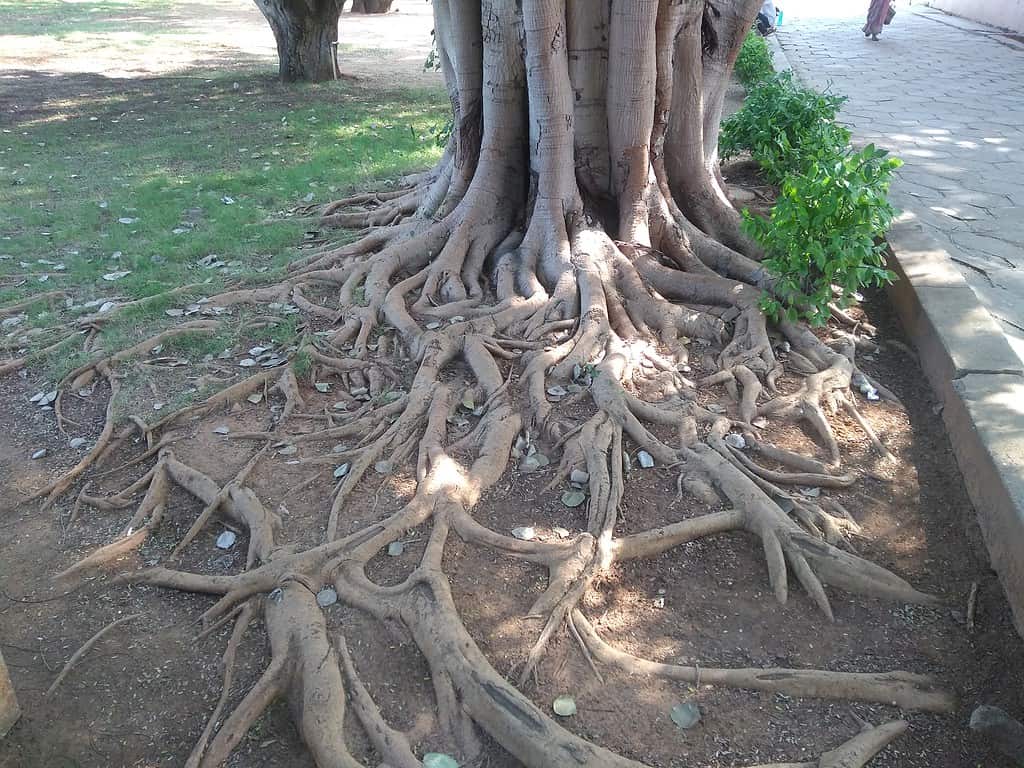
Exposed tree roots can be damaged by heavy rain or bad weather.
Many common backyard trees — including pines, maples, and oaks — have roots that can reach as deep as two to three feet. This will prevent you from seeing problems that exist below the dirt, but you can check the base of the trunk and the ground for signs of heaving roots. This occurs when trees don’t have sufficient space to grow, and the roots grow upwards, above the soil level.
Soil erosion can expose tree roots, leaving them vulnerable to damage from heavy rain. Roots can also be damaged from digging or construction. Keep an eye on the base of the tree’s trunk for new sprouts, as this could be a sign that the tree is distressed or even dying.
2. Tilting or Leaning
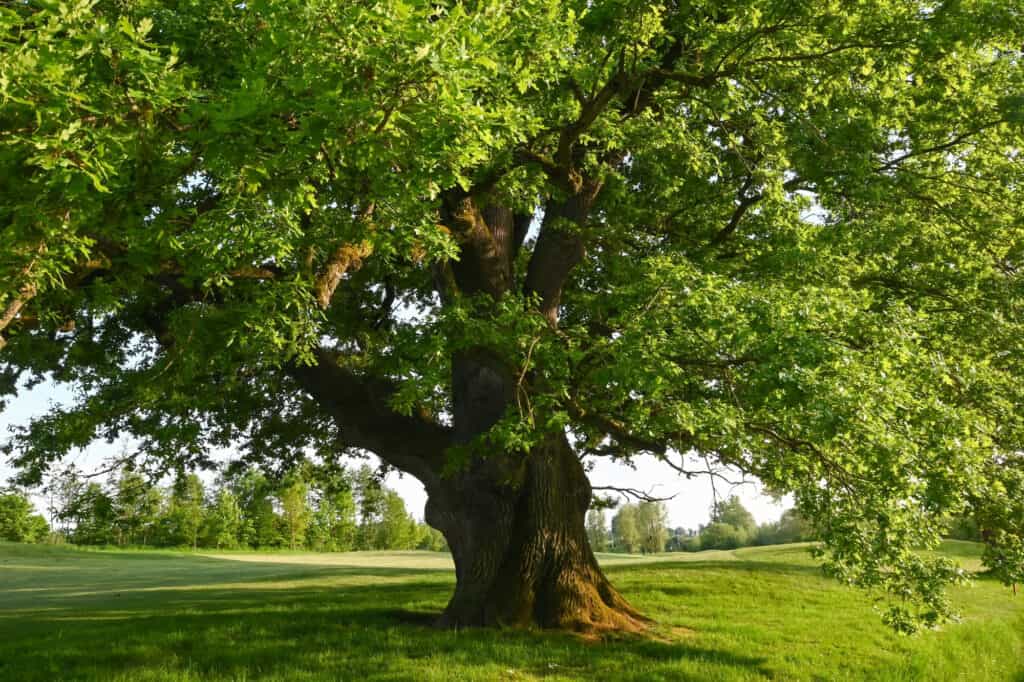
A tree developing a lean can indicate structural issues or weakness.
©James d’Almeida/Shutterstock.com
Take a few steps back and take a look at the tree as a whole. If the tree has developed a lean or an existing tilt has increased, it can indicate an issue with the roots. The root system could have been damaged by wind or heavy rain, which is difficult for trees to recover from. It is rare for a tree to survive if it’s been tipped to an angle of more than 15 degrees. A significant lean can be a sign that a tree needs to be cut down.
3. Dry and Brittle Bark

A tree’s bark can have evidence of injury, distress, or disease.
©Kyle Selcer/Shutterstock.com
Take a closer look at your tree and examine the bark. If the bark is dry, brittle, and easily falls off the tree, that can indicate a dying tree. Healthy bark should feel slightly moist, although there can be a wide variance in bark appearance between tree species.
Check the tree for any areas with missing bark, deep cracks, or evidence of bark beetles. These can all be signs that a tree is dying. If the underside of the bark has silvery-white scales, then the tree may have a fungal disease called Hypoxylon canker. This disease weakens trees and is a strong sign that a tree needs to be cut down.
4. A Lack of Leaves
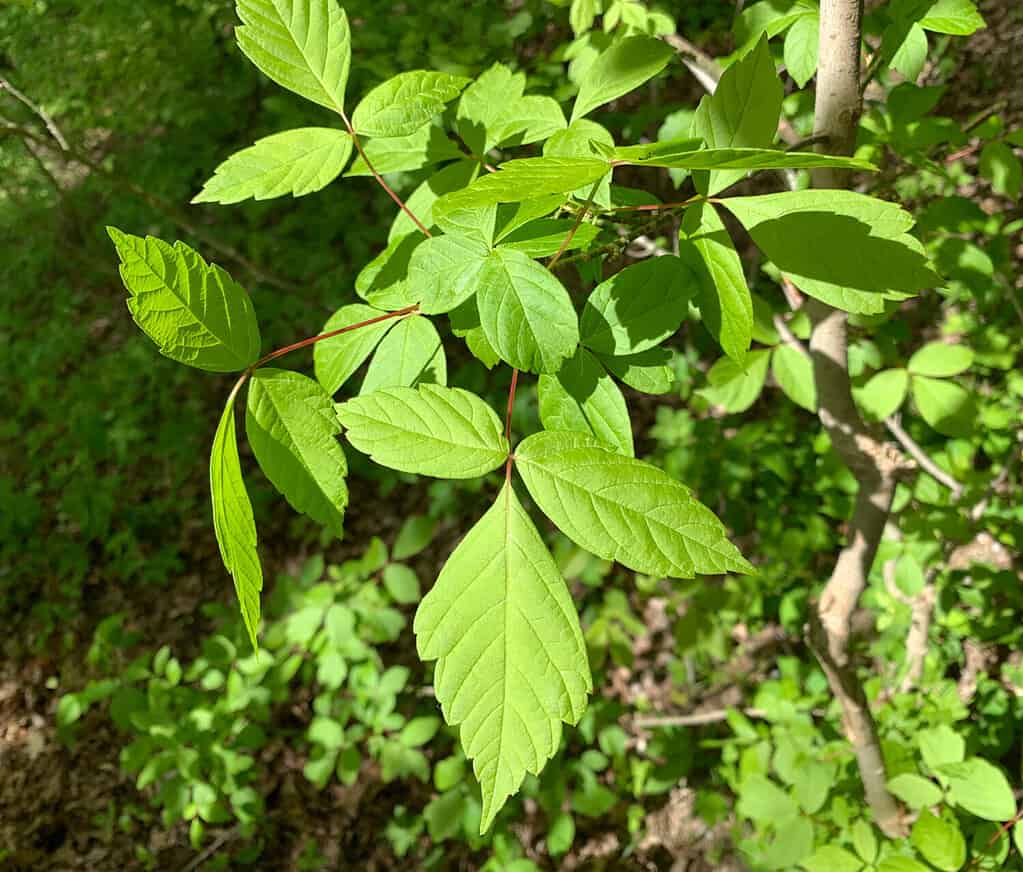
Check leaves for common signs of distress, such as wilting or yellowing.
©CampSmoke/Shutterstock.com
The leaves of a tree can give important information to the tree’s health. Coniferous evergreen trees typically retain their green needles throughout the year. Deciduous trees go through an annual cycle of shedding leaves every autumn and regrowing them in the spring.
If your coniferous evergreen tree is losing large numbers of needles, or the needles it has are turning a brownish or reddish color, then it may be time to cut it down. For deciduous trees, it’s best to evaluate their leaves during the summer. If large sections are missing or dry and brown instead of bright green, the tree exhibits signs of stress.
5. Dead Branches

When dead branches fall, they can cause injuries or property damage.
©Chuck Wagner/Shutterstock.com
Healthy trees will occasionally have dead branches that can be managed with regular pruning. However, if your tree has large sections of branches without leaves, or you’re noticing an increase of sticks and limbs on the ground, it could indicate your tree is dying.
To test if a branch is dead, bend a small twig between your fingers. If it snaps, then the branch could be dead. A healthy twig will have some flexibility before it breaks.
6. Pests Have Made a Home in the Tree
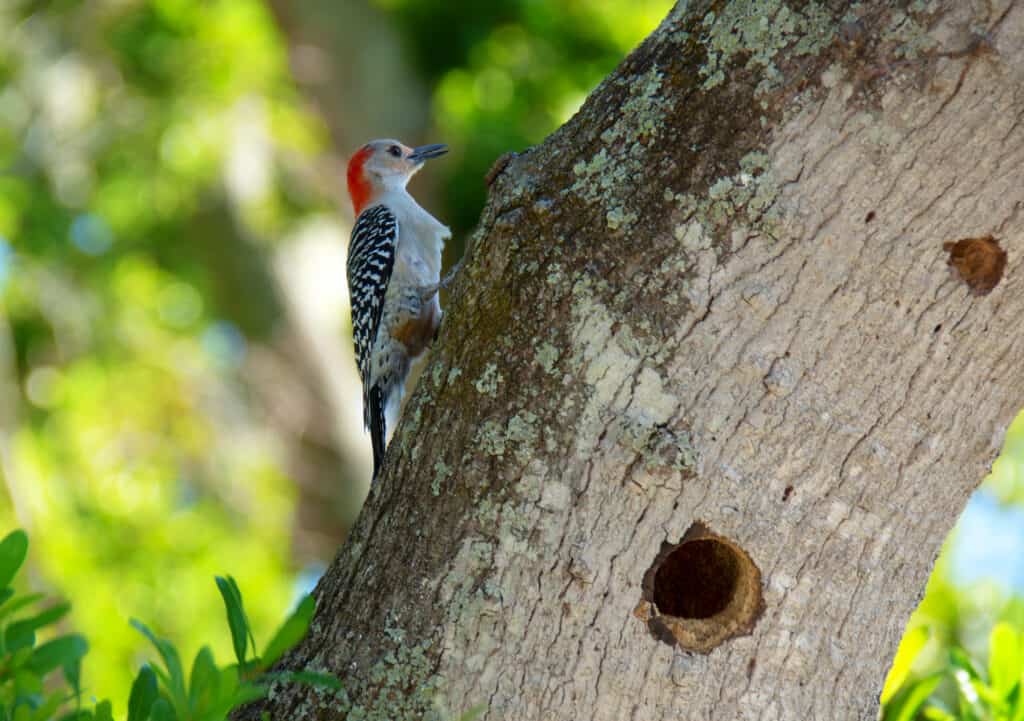
There are over 200 different species of woodpeckers.
©Michael O’Keene/Shutterstock.com
Distressed trees can attract a variety of bugs and even birds.
Some species of woodpeckers prefer dead trees to make their nests in. Woodpeckers primarily eat insects and insect larvae, which are often found in decaying trees. If a tree in your yard is attracting woodpeckers, it could be a sign that it is dying.
Wood is also the main source of food for termites, and a termite colony can consume hundreds of pounds of wood each year. Some species of termites can live inside trees, while others live in the ground and create tunnels to access trees as a source of food.
Larger than household ants, carpenter ants also prefer to build their colonies in moist and decaying wood. Signs of carpenter ants include wood debris and lines of worker ants on or around the tree.
Small brown or black beetles can also bore into a tree’s bark, causing significant damage. If bark beetles are targeting a tree, you might be able to see them by loosening and removing a piece of bark. You can also look for pitch tubes — evidence the tree has been fighting an intruder. There is currently no approved chemical pesticide for bark beetles, and infected trees will likely need to be cut down.
7. Fungal Growth
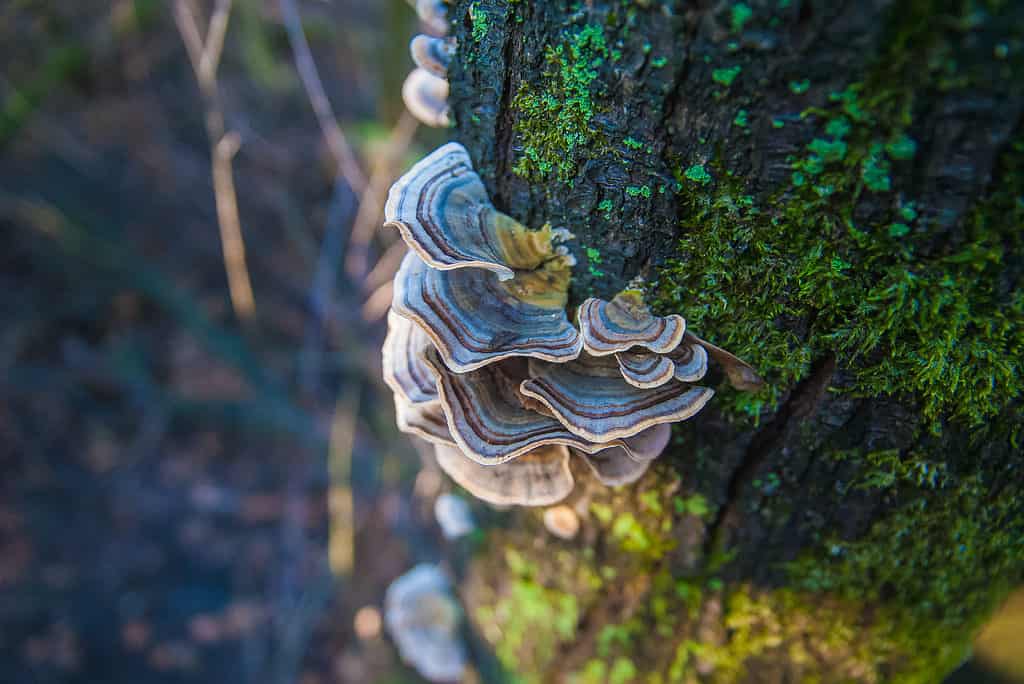
The turkey tail mushroom earned its name from its colorful rings that resemble a turkey’s feathers.
©Slobodan Cvetkovic/Shutterstock.com
Several species of mushrooms grow on dead and decaying trees. If you see turkey tail mushrooms, lion’s mane, or chicken of the woods on your tree, then it may be time to cut the tree down. Mushrooms growing on the tree’s trunk can be the result of deep internal decay.
8. Scratch Test
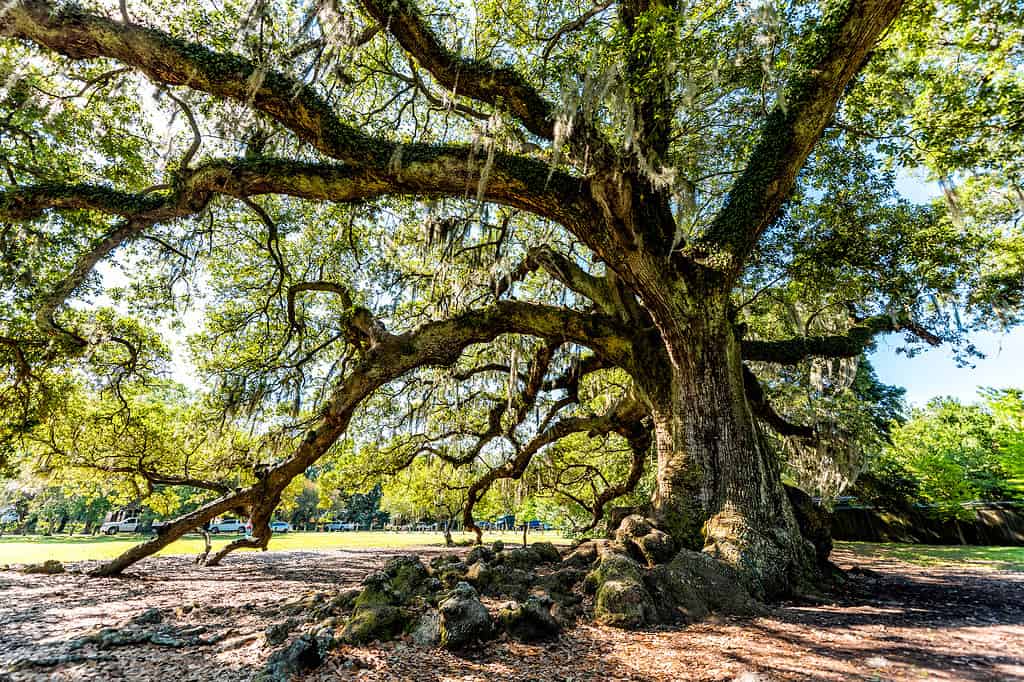
Some trees can survive for years with exposed roots or dead branches. Be sure to thoroughly assess a tree before deciding to cut it down.
©krblokhin/iStock via Getty Images
Underneath their bark, trees have a green layer called cambium. If a tree is dead or dying, then the cambium will be brown. You can check this by using a small knife of your fingernail to scratch away the top layer of bark. Repeat this test on a few different spots on your tree. If you don’t find any remaining green cambium, that is a strong sign that the tree is dead and needs to be cut down.
The photo featured at the top of this post is © Emilio C/Shutterstock.com
Thank you for reading! Have some feedback for us? Contact the AZ Animals editorial team.







